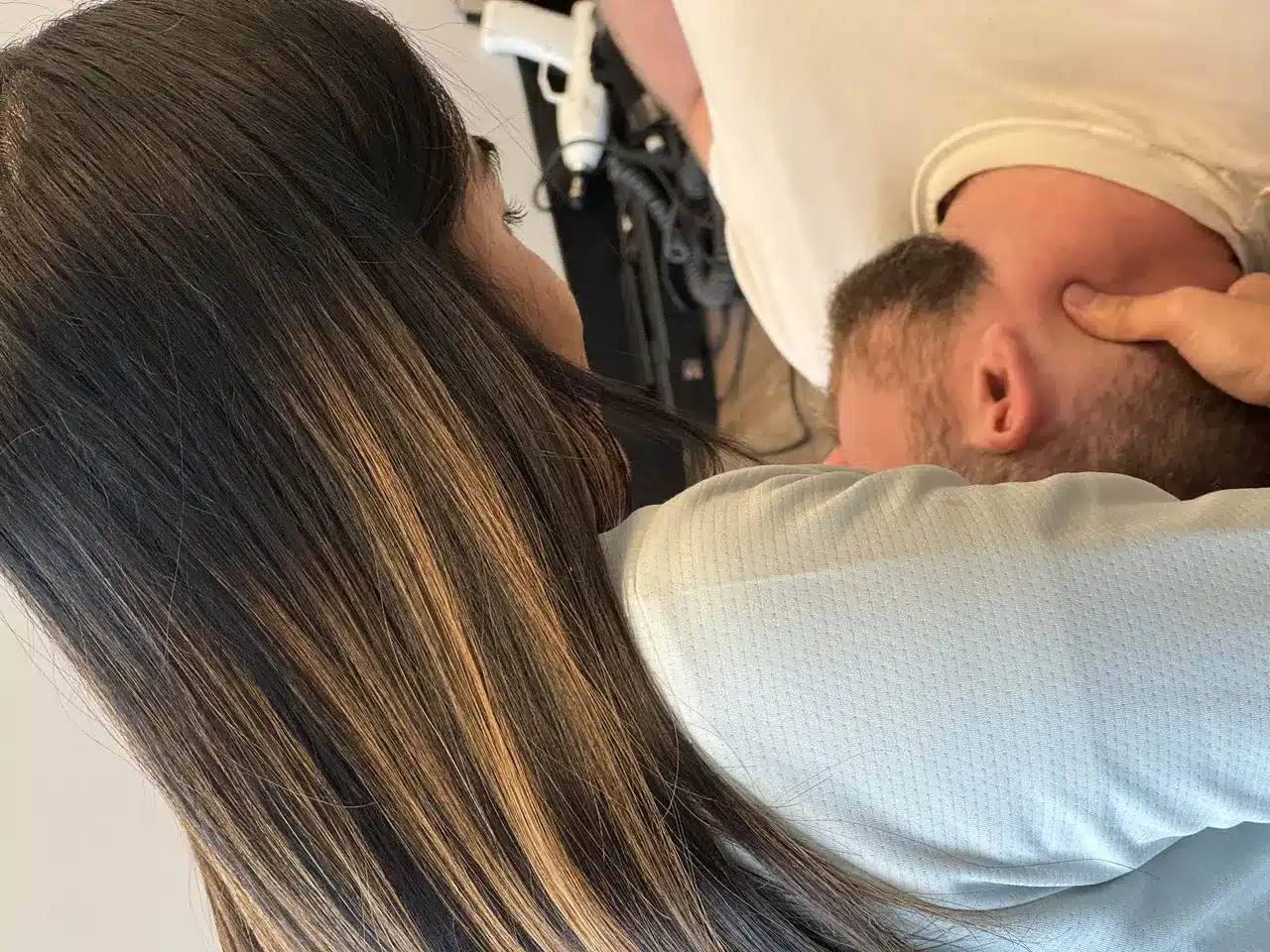Understanding back and neck pain
Back and neck pain can be caused by poor posture, muscle strain, injury, or underlying health conditions. The pain may range from mild to severe and can affect your daily activities. Common symptoms include stiffness, muscle spasms, and limited range of motion. In some cases, the pain may radiate to the arms or legs. It’s essential to seek professional help from Head 2 Toe to diagnose the cause of your pain and receive appropriate treatment.
Role of a local chiropractor in Lynnwood
A local chiropractor can help you with back and neck pain by providing hands-on spinal manipulation and adjustments. This can help to alleviate pain, improve function, and support the body’s natural ability to heal itself. Chiropractors may also offer exercise, rehabilitation, and ergonomic advice to help manage and prevent further pain. Keep in mind that our chiropractor team at Head 2 Toe are trained to diagnose and treat musculoskeletal issues, and can provide personalized treatment plans based on your specific needs.
Benefits of seeking treatment from a local chiropractor
Local chiropractors offer personalized care tailored to your specific needs, providing hands-on spinal adjustments and other treatments to alleviate your back and neck pain. By seeking treatment from a local chiropractor, you can benefit from a holistic approach to healing, which may include lifestyle advice, posture correction, and exercises to improve your overall well-being. Additionally, visiting a local chiropractor can save you time and travel expenses, as well as allow for more frequent and convenient appointments.
Initial consultation with a local chiropractor
During your first visit to a local chiropractor, they will take a comprehensive medical history and perform a physical examination to assess your back and neck pain. We may also request imaging studies like X-rays or MRIs to help with the diagnosis. Your chiropractor will discuss with you the findings and create a tailored treatment plan that may include spinal adjustments, manual therapy, and exercises to alleviate your pain and improve your mobility. This initial consultation is crucial for the chiropractor to understand your needs and develop a personalized approach to address your specific back and neck issues.
Chiropractic treatments for back and neck pain
Chiropractic treatments for back and neck pain aim to relieve discomfort and improve mobility in the affected areas. Chiropractors use manual adjustments to realign the spine and alleviate pressure on the nerves. These adjustments can help reduce pain, improve flexibility, and promote overall well-being. In addition to adjustments, chiropractors may also recommend exercises, stretches, and lifestyle changes to support long-term relief from back and neck pain. If you’re experiencing persistent discomfort in your back or neck, seeking the help of a local chiropractor could offer holistic solutions for managing your symptoms.
Adjustments and manipulations
Chiropractors use adjustments and manipulations to realign your spine and relieve pressure on your nerves. These skilled and precise movements can help alleviate back and neck pain by improving the mobility of your spine and restoring proper alignment. Chiropractors often use their hands to apply controlled force to specific joints, providing relief and promoting overall wellness. Regular adjustments can also help prevent future pain and discomfort.
Therapeutic exercises and stretches
Therapeutic exercises and stretches are an essential part of chiropractic care for back and neck pain. They can help improve flexibility, strengthen muscles, and reduce discomfort. Your local chiropractor may recommend specific exercises and stretches tailored to your condition to help alleviate your symptoms and improve your overall well-being. By incorporating these exercises into your routine, you can support the effectiveness of chiropractic adjustments and promote better spinal health.
Lifestyle and ergonomic advice
A local chiropractor can offer lifestyle and ergonomic advice to help manage your back and neck pain. By making changes to your daily activities and work environment, such as improving your posture, using ergonomic furniture, and incorporating targeted exercises, you can minimize strain on your back and neck. The chiropractor will provide personalized recommendations to enhance your overall well-being and prevent future discomfort.
Progress tracking and follow-up appointments
After your initial chiropractic treatment, it’s important to schedule follow-up appointments to track your progress. During these appointments, your chiropractor will assess how you’re responding to the treatment and make adjustments as needed. This ongoing monitoring allows your chiropractor to ensure that you are on the right path to recovery and to address any new concerns that may arise. Regular follow-up appointments also give you the opportunity to discuss any changes in your symptoms and to ask any questions you may have. Tracking your progress and attending follow-up appointments are crucial for achieving the best results from your chiropractic care.
Conclusion: finding relief with a local chiropractor
After learning about the benefits of chiropractic care, you may now consider seeking relief from your back and neck pain with a local chiropractor. Chiropractors are trained to diagnose and treat musculoskeletal conditions, and their treatments often focus on spinal manipulation and adjustments to improve your body’s function and alleviate pain. By working with a local chiropractor, you can receive personalized care and guidance to address your specific concerns and improve your overall well-being. A local chiropractor can provide non-invasive, drug-free treatments that may help you find relief from your back and neck pain, allowing you to lead a more comfortable and active lifestyle.
Exercises You Can Do at Home after a Visit to the Chiropractic Clinic
Stay active at home with exercises from ‘Exercises You Can Do at Home after a Visit to the Chiropractic Clinic’.
Read MoreAthletic Therapy: A Vital Component in Sports Rehabilitation
Discover the importance of athletic therapy in sports rehabilitation in our insightful blog on ‘Athletic Therapy: A Vital Component in Sports Rehabilitation’.
Read MoreA Comprehensive Guide to Spinal Therapy for Athletes
Discover the benefits of spinal therapy for athletes in our comprehensive guide ‘A Comprehensive Guide to Spinal Therapy for Athletes’.
Read MoreHow Chiropractic Techniques are Advancing in Pain and Injury Treatment
Discover the latest advancements in pain and injury treatment through innovative chiropractic techniques.
Read MoreSpine Rehabilitation: How Corrective Exercises Can Help with Posture and Pain Relief
Discover how corrective exercises in spine rehabilitation relieve pain and improve posture – read more now!
Read MoreCorrective Exercises: Your Secret Weapon Against Chronic Pain
Combat chronic pain with corrective exercises featured in ‘Corrective Exercises: Your Secret Weapon Against Chronic Pain’.
Read More





